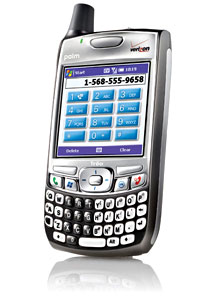 It’s been spluttering and wheezing in its sick bed for what seems like an eternity, but the latest figures from research firm IDC confirm that the prognosis isn’t good for the Personal Digital Assistant (PDA).
It’s been spluttering and wheezing in its sick bed for what seems like an eternity, but the latest figures from research firm IDC confirm that the prognosis isn’t good for the Personal Digital Assistant (PDA).
The figures show the worldwide market for handheld PDAs continuing to plummet, with sales dropping for the fourth consecutive year in 2005.
IDC’s research reveals that just 2.2 million devices were shipped during the last three months of the year, with annual sales falling 16.7 percent to 7.5 million units – substantially down on 2004’s figure of 9.1 million.
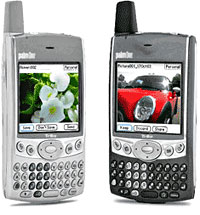 Although a bright Christmas period saw sales grow 37.6% over Q3, the trend remains resolutely downward, with the declining market segment driving PDAs into a market niche.
Although a bright Christmas period saw sales grow 37.6% over Q3, the trend remains resolutely downward, with the declining market segment driving PDAs into a market niche.
Industry pundits put the slow but steady decline of PDAs down to the exponential growth of smartphones, with the convenience and features of converged handhelds proving more alluring to punters.
According to Gartner’s figures, a massive 72 million smartphones will be shifted this year, compared to just 6.6 million units in 2003.
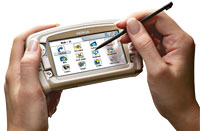 But don’t go ordering flowers for the PDA funeral quite yet, as IDC research analyst Ramon Llamas insists that it’s not all over for the PDA market, with plenty of smaller vendors remaining committed to a more niche PDA market.
But don’t go ordering flowers for the PDA funeral quite yet, as IDC research analyst Ramon Llamas insists that it’s not all over for the PDA market, with plenty of smaller vendors remaining committed to a more niche PDA market.
“The departure of other worldwide vendors has opened the door for smaller vendors to improve their position within the market. During the course of the year, several smaller vendors remained within striking distance of beating each other for the number four or five position, and even posed a challenge to some of the worldwide vendors,” commented Llamas.
Palm – whose market leading Treo 650 smartphone has just been ported to Windows in the shape of the Treo 700w – remains the most popular PDA brand, securing 43 per cent of the market last year, with HP in second place at 25 per cent.
Elsewhere, Mark Nelson, the founder of Ovid Technologies who owns 8 percent of Palm’s stock, has urged Palm to consider selling its business to big boys like Research in Motion, Dell or Hewlett-Packard while its stock is high.
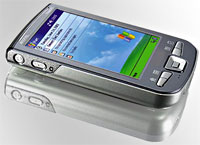 With Palm winding down its PDA business and concentrating on its Treo smartphone range, Nelson argues that Palm will have difficulty competing against deep-pocketed rivals like Dell and HP who are currently ploughing big R&D budgets into similar products.
With Palm winding down its PDA business and concentrating on its Treo smartphone range, Nelson argues that Palm will have difficulty competing against deep-pocketed rivals like Dell and HP who are currently ploughing big R&D budgets into similar products.
Palm declined to comment, but Todd Kort, an analyst at Gartner, reckons that Palm’s independence is a positive advantage, making them, “faster on their feet” with the ability to “turn on a dime a little faster than Nokia can.”
In Europe, Nokia still rule the smartphone roost, but as we reported last year, the Treo remains hugely popular in the States.
Kort suggested that Palm’s lean’n’mean size gives it the edge to adapt to quickly changing market trends and target high-end customers.
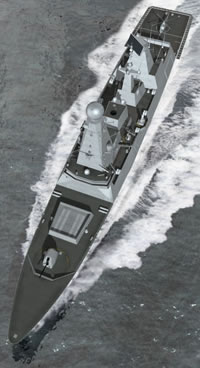 You may have heard about yesterdays launching of the latest UK warship – HMS Darling (its ninth incarnation), a Type 45 Destroyer.
You may have heard about yesterdays launching of the latest UK warship – HMS Darling (its ninth incarnation), a Type 45 Destroyer. As well as all of the killing parts, it’s also got a cuddly side, which frankly is the side that interests us more. The 230 crew will be treated quite unlike any other Navy.
As well as all of the killing parts, it’s also got a cuddly side, which frankly is the side that interests us more. The 230 crew will be treated quite unlike any other Navy.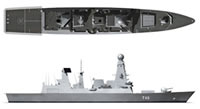 If you’re interested in buying one, do let
If you’re interested in buying one, do let  They’ve been bustier than Jock McHasty in a rush at i-mate, as the PDA/smartphone vendor releases another addition to their range, the i-mate PDA-N – the company’s first GPS PDA.
They’ve been bustier than Jock McHasty in a rush at i-mate, as the PDA/smartphone vendor releases another addition to their range, the i-mate PDA-N – the company’s first GPS PDA.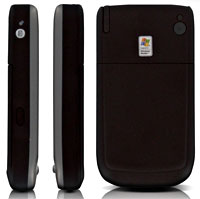 The front of the slim device is dominated by a 2.83″ 240×320 pixels transmissive TFT-LCD screen supporting 64k colours, with a row of four buttons and a joystick below.
The front of the slim device is dominated by a 2.83″ 240×320 pixels transmissive TFT-LCD screen supporting 64k colours, with a row of four buttons and a joystick below.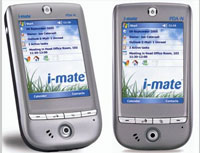 According to I-mate, the PDA-N notches up a rated battery life of 5 hours in GPS mode and 8 hours playing a looped video.
According to I-mate, the PDA-N notches up a rated battery life of 5 hours in GPS mode and 8 hours playing a looped video. Four months after releasing their first iTunes-enabled mobile phone, the disappointing Motorola ROKR E1, Motorola have had another stab at creating the perfect music phone.
Four months after releasing their first iTunes-enabled mobile phone, the disappointing Motorola ROKR E1, Motorola have had another stab at creating the perfect music phone.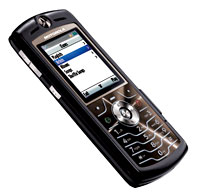 The biggest complaint was the laughably feeble memory on the ROKR that could only hold a maximum of 100 iTunes songs – regardless of memory capacity – and a treacle-slow song transfer rate.
The biggest complaint was the laughably feeble memory on the ROKR that could only hold a maximum of 100 iTunes songs – regardless of memory capacity – and a treacle-slow song transfer rate.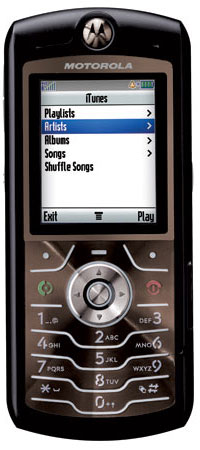 In a flurry of arty waffle, Steve Lalla, vice president and general manager for mass-market products at Motorola, explained that the, “L7 is really in what we call our ‘self-expression portfolio,’ where design and style is the key premise behind the product”.
In a flurry of arty waffle, Steve Lalla, vice president and general manager for mass-market products at Motorola, explained that the, “L7 is really in what we call our ‘self-expression portfolio,’ where design and style is the key premise behind the product”.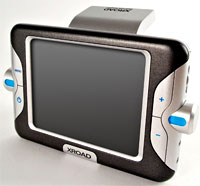 International men of mystery, jet setters, globe-trotters and drug smugglers might just be the niche group targeted by Carpoint’s world-spanning navigation system.
International men of mystery, jet setters, globe-trotters and drug smugglers might just be the niche group targeted by Carpoint’s world-spanning navigation system. Called the XRoad Paris (but, thankfully, no relation to the cash-rich, time-rich airhead of the same name) the device can guide users through nation after nation in a choice of seven languages.
Called the XRoad Paris (but, thankfully, no relation to the cash-rich, time-rich airhead of the same name) the device can guide users through nation after nation in a choice of seven languages.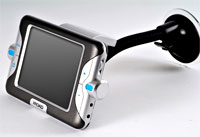 We assume the two chunky buttons each side of the screen are for making onscreen selections and scrolling through the map, but seeing as babelfish packed up mid-way through our attempt at a Korean translation, I guess we’ll never know.
We assume the two chunky buttons each side of the screen are for making onscreen selections and scrolling through the map, but seeing as babelfish packed up mid-way through our attempt at a Korean translation, I guess we’ll never know.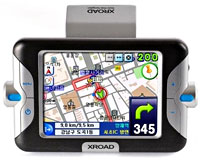 We can’t think of any over-riding reason why anyone would need a GPS unit stuffed full with half the world’s maps, but it’s certainly a well styled model and its encyclopedic knowledge of the world’s cities might come in useful in a pub quiz at the very least.
We can’t think of any over-riding reason why anyone would need a GPS unit stuffed full with half the world’s maps, but it’s certainly a well styled model and its encyclopedic knowledge of the world’s cities might come in useful in a pub quiz at the very least. It won’t be long before kids think that “going to the chemists for some prints” is some kid of euphemism for scoring drugs, but with the onslaught of cheap digital cameras and high quality printers, the writing’s on the wall for the print developing business.
It won’t be long before kids think that “going to the chemists for some prints” is some kid of euphemism for scoring drugs, but with the onslaught of cheap digital cameras and high quality printers, the writing’s on the wall for the print developing business.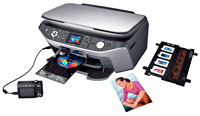 Images can be read from a built in CD-R drive for printing, with high quality scanning afforded courtesy of a 3200 x 6400 dpi MatrixCCD scanner scanner.
Images can be read from a built in CD-R drive for printing, with high quality scanning afforded courtesy of a 3200 x 6400 dpi MatrixCCD scanner scanner.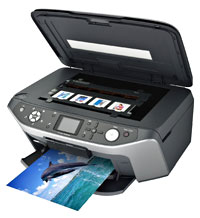 Users can monitor what’s going on through a high definition (256 ppi) 2.5 inch colour LCD preview monitor, with a USB port for backing up data on to external storage devices (such as CD-R/Zip drives).
Users can monitor what’s going on through a high definition (256 ppi) 2.5 inch colour LCD preview monitor, with a USB port for backing up data on to external storage devices (such as CD-R/Zip drives).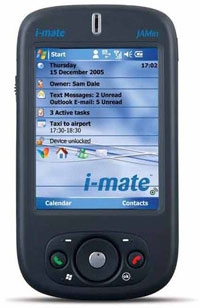 A week ahead of its scheduled launch, smartphone bigwigs i-mate have revealed details of their latest model, the JAMin.
A week ahead of its scheduled launch, smartphone bigwigs i-mate have revealed details of their latest model, the JAMin.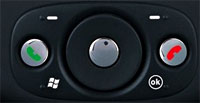 Switching from a 416 MHz Intel processor to a 200 MHz TI processor (we know it sounds like it must be slower but they’re not directly comparable), i-mate have stuck with the JAM form factor, adding a different button layout and twice the ROM.
Switching from a 416 MHz Intel processor to a 200 MHz TI processor (we know it sounds like it must be slower but they’re not directly comparable), i-mate have stuck with the JAM form factor, adding a different button layout and twice the ROM. Also known as the HTC Prophet (and O2 XDA Neo), the phone shouldn’t stir it up in the pocket department, measuring a compact 10.8 x 5.8 x 1.8cm and weighing 150g. Memory expansion is taken care of courtesy of a SD IO slot
Also known as the HTC Prophet (and O2 XDA Neo), the phone shouldn’t stir it up in the pocket department, measuring a compact 10.8 x 5.8 x 1.8cm and weighing 150g. Memory expansion is taken care of courtesy of a SD IO slot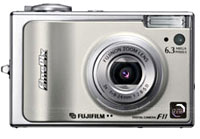 We raved about the auto-everything Fujifilm F10, so when we heard that they were producing an updated version of the camera offering more manual controls, we were happy to dust off the chequebook and place an order.
We raved about the auto-everything Fujifilm F10, so when we heard that they were producing an updated version of the camera offering more manual controls, we were happy to dust off the chequebook and place an order. We remain impressed with the results, with the high ISO rating letting us capture natural-looking images where other cameras would be reaching for the flash or crumbling into a noisy mess.
We remain impressed with the results, with the high ISO rating letting us capture natural-looking images where other cameras would be reaching for the flash or crumbling into a noisy mess.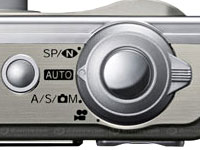 With no new dedicated controls to control aperture and shutter settings, exposures had to be adjusted through a rather clunky interface that involved doubling up the main four-way controller and central MENU/OK buttons – not always without confusion.
With no new dedicated controls to control aperture and shutter settings, exposures had to be adjusted through a rather clunky interface that involved doubling up the main four-way controller and central MENU/OK buttons – not always without confusion.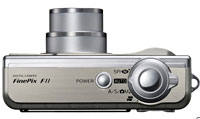 For folks seeking a simple, all round point and shoot camera, the F10 remains our first choice, but for photographers keen to take advantage of Fuji’s outstanding low light abilities with the ability to control exposure manually, the F11 is well worth the extra £30 or so.
For folks seeking a simple, all round point and shoot camera, the F10 remains our first choice, but for photographers keen to take advantage of Fuji’s outstanding low light abilities with the ability to control exposure manually, the F11 is well worth the extra £30 or so.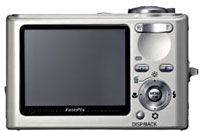 Shutter speed 3 – 1/2000 th sec
Shutter speed 3 – 1/2000 th sec After many years of trotting around town with pockets stuffed full of a Palm PDA and a mobile phone, we decide that an all-in-one PDA/smartphone combo would be the best way to reduce our ostentatious trouser bulge.
After many years of trotting around town with pockets stuffed full of a Palm PDA and a mobile phone, we decide that an all-in-one PDA/smartphone combo would be the best way to reduce our ostentatious trouser bulge. The left hand side sports the camera button, volume control and voice memo switch, none of which are particularly well placed (it’s all too easy to fire off the voice memo/camera switched when turning the handset on).
The left hand side sports the camera button, volume control and voice memo switch, none of which are particularly well placed (it’s all too easy to fire off the voice memo/camera switched when turning the handset on).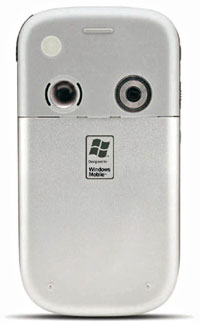 Performance
Performance Despite being billed as the “Killer-Sound Phone” by makers Pantech & Curitel, we’re happy to report that the PT-L1900 doesn’t emit a murderous noise beam, but is in fact a top notch music phone.
Despite being billed as the “Killer-Sound Phone” by makers Pantech & Curitel, we’re happy to report that the PT-L1900 doesn’t emit a murderous noise beam, but is in fact a top notch music phone.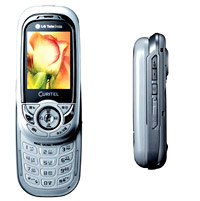 Back to the phone, the mid-size device (102X48X25.7mm) is dominated by a large, two inch, 240X320 pixels (QVGA), 262k colour TFT LCD display screen, with a slide out keyboard for phone functions.
Back to the phone, the mid-size device (102X48X25.7mm) is dominated by a large, two inch, 240X320 pixels (QVGA), 262k colour TFT LCD display screen, with a slide out keyboard for phone functions. The makers claim up to 190 hours of standby time and up to 3½ hours of talk time.
The makers claim up to 190 hours of standby time and up to 3½ hours of talk time.